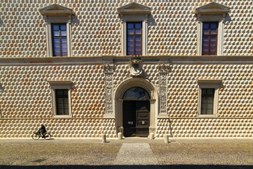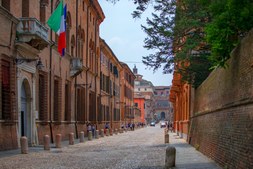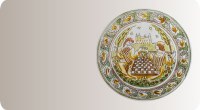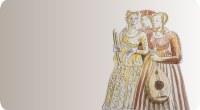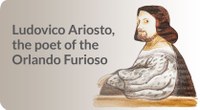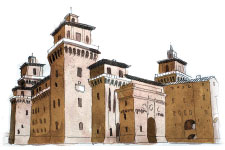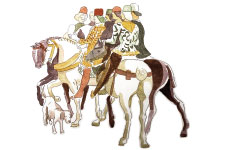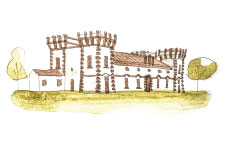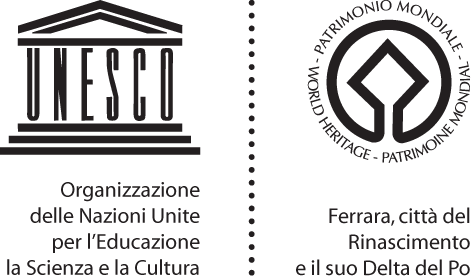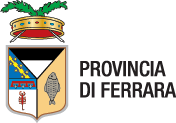
An architectural triumph, designed by Biagio Rossetti and built at the heart of the Herculean Addition, on the important crossroads known as “Quadrivio degli Angeli”, it was once home to Sigismondo d’Este. Covered in about 8,500 pink and white marble ashlars, it is considered one of the masterpieces of the Renaissance.

Designed by the architect Biagio Rossetti and standing on Corso Ercole I d’Este, this monumental palace once belonged to Giulio d’Este, protagonist of a dramatic event that befell Ferrara and the Este Court in the early 16th century: the plot against Duke Alfonso, which he hatched with his brother Ferrante, is remembered by the writer Ludovico Ariosto in The Frenzy of Orlando (Orlando furioso).

Built for Francesco da Castello, personal doctor of Ercole I d’Este, this is the oldest palace in the Herculean Addition. Mentioned in the ode written by Carducci, To the City of Ferrara (Alla Città di Ferrara), it boasts a magnificent monumental portal.

The monumental crossroads between Corso Ercole I d'Este and the Corso Porta Mare - Corso Biagio Rossetti axis, it is overlooked by Palazzo Prosperi Sacrati, Palazzo Bevilacqua, Palazzo Turchi di Bagno and Palazzo dei Diamanti. Each building has a well-defined architectural significance in the urban plan of the Herculean Addition.

In 1492, Ercole I d’Este appointed architect Biagio Rossetti to incorporate the prestigious buildings located north of Este Castle into the town centre. The architect designed the Herculean Addition, an urban plan that, thanks to its originality and rationality, made Ferrara the first modern city in Europe.

The main road in the Herculean Addition, it leads from the castle to Porta degli Angeli. There are no commercial businesses along it, but it is flanked by beautiful Renaissance palaces.

This is the biggest public park within the city walls; as well as the two ancient Lebanon Cedars at its entrance, it boasts yew trees, an imposing ginkgo and an enormous English oak near the entrance on Corso Ercole I d’Este.

This was the last important building constructed in the Este era. It was commissioned by Count Onofrio Bevilacqua in a prime urban location, between the Quadrivio degli Angeli and ancient Piazza Nova, now Piazza Ariostea.

An unusual oval-shaped square with a lowered floor, it’s also famous for hosting the Palio races. It was designed by the architect Biagio Rossetti and at its centre stands a column bearing the statue of the poet Ludovico Ariosto, who lends his name to the square.

Home to the famous poet in the latter part of his life, which he dedicated to the third and definitive version of The Frenzy of Orlando (Orlando furioso), published in 1532. On the first floor it houses a museum dedicated to Ariosto, which has some artefacts and a precious 1881 edition of his most famous work, illustrated by Gustave Doré. It is also home to the Giorgio Bassani Foundation.

It was Borso d’Este who promoted the construction of a Carthusian monastery in 1452, which, after completion of the Herculean Addition, was incorporated within the walls. By order of Duke Ercole I, successor of Borso, another addition to the site was the construction of the Tempio di San Cristoforo, one of the most original works of the Renaissance period in Ferrara. It houses a marvellous collection of works of art, include paintings, wooden choirs, a ciborium, altarpieces and other liturgical furnishings.

The city’s main burial site, situated within the walls of Ferrara, in the central exedra of the First Great Cloister. It boasts the tomb of Duke Borso d’Este, one of the patrons of the charterhouse. An integral part of the monumental cemetery is the Church of San Cristoforo alla Certosa, whose marble bas-reliefs, at the bases of the pillars, date from the early 16th century and portray some of the heraldic feats of the Este lineage.

This opens in the Rossetti walls, at the end of Corso Ercole I d'Este. Originally built as a watchtower, it was the former access to the ducal hunting estate of Barco, located where “G. Bassani” Park now stands. According to popular tradition, Cesare d’Este, the last Duke of Ferrara, was said to have exited from this gate in 1598, when the city was ceded to the Papal State.

The 9 kilometres of Renaissance walls that surround Ferrara combine monumental beauty and military function so magnificently that even Michelangelo came to study them. Today, they are a huge park that can be covered on foot or by bike, along handy paths that offer visitors the opportunity to walk or cycle surrounded by lush greenery and history.

Lying between the city and the Po River, it occupies a total of 1,200 hectares. Once the hunting reserve of the Este family, it has now been turned over to leisure and entertainment. Named after author Giorgio Bassani, it represents the Green Addition, the fourth in Ferrara.
